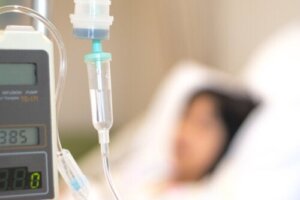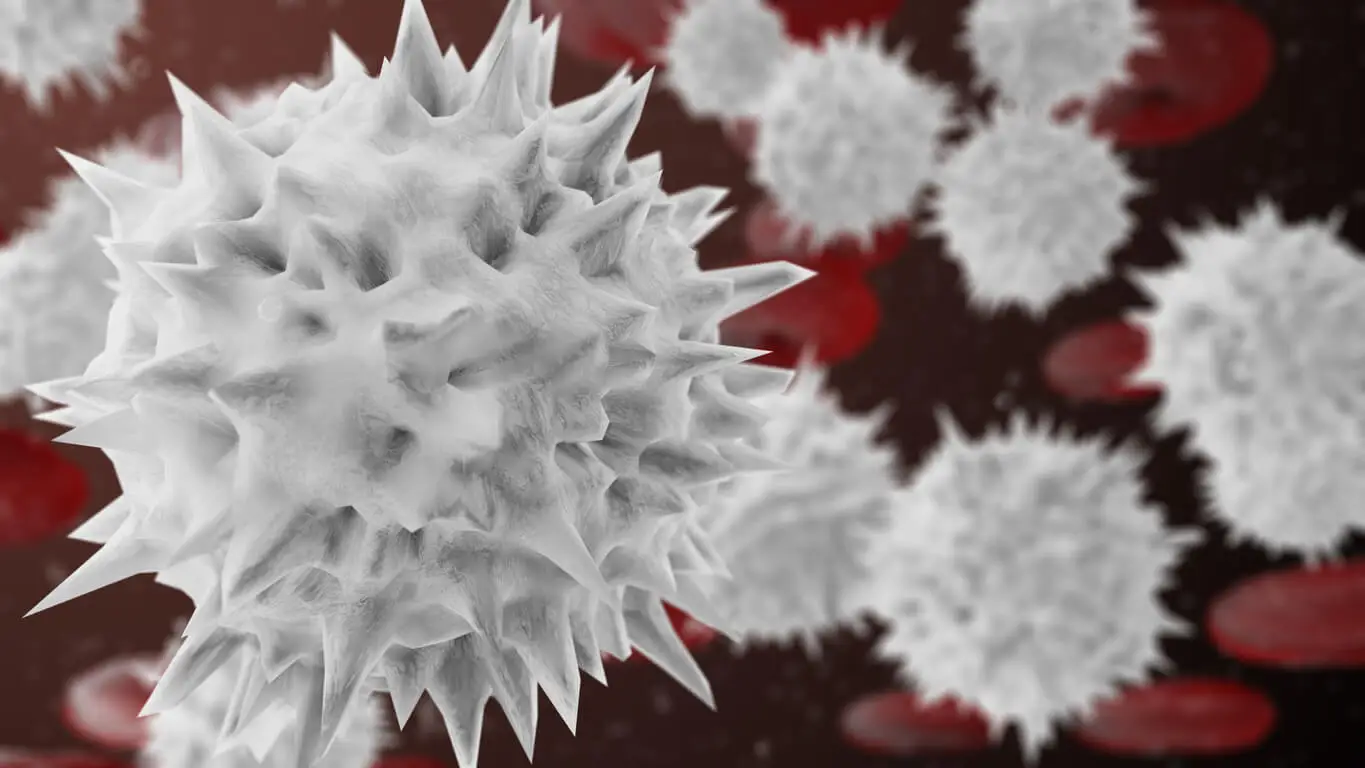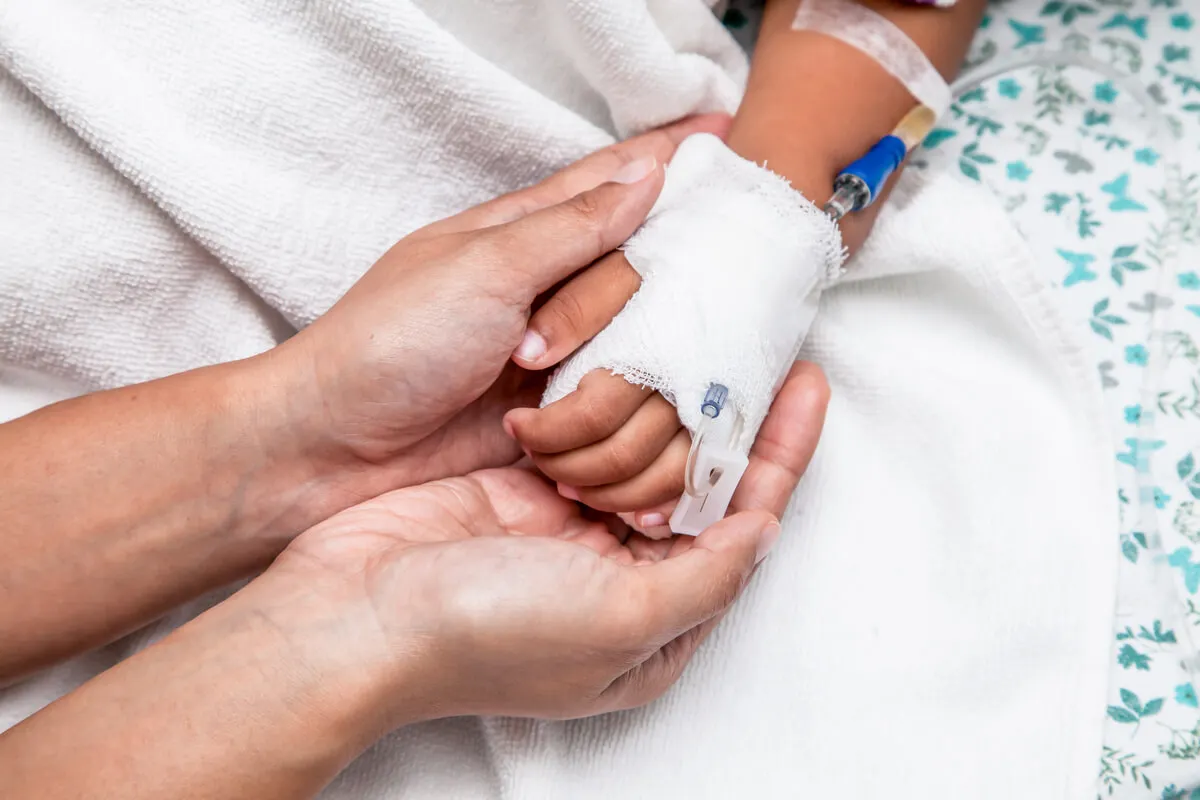A New Treatment Cures Cancer in a 13-year-old Girl


Written and verified by the doctor Leonardo Biolatto
Talk of a treatment that cures cancer seems miraculous. However, science has advanced far enough to find alternative ways to conventional approaches.
The case of Alyssa proves it. This 13-year-old English girl was treated with a method that is being used for the first time in cancer patients. To date, according to the Great Ormond Street Hospital for Children, she is free of life-threatening acute lymphoblastic leukemia.
Her mother can’t believe that she’s gone from being hopeless to imagining her living a normal life. And it’s all supported by base editing therapy, which has only been around for a few years among scientists.
“At the end of last year, we thought it was going to be the last Christmas we were going to be with her. In January, when she turned 13, all I did was cry.” -Kiona, Alyssa’s mother
What was Alyssa’s disease?
Acute lymphocytic leukemia or acute lymphoblastic leukemia is a malignant neoplasm of the white blood cells. It develops very rapidly and can be fatal within a few months.
It tends to start in the bone marrow, where lymphocytes (a type of white blood cell) reproduce uncontrollably. From there, they pass into the blood and reach other organs, prolonging their excessive reproduction. Therefore, traces can be found in the liver, lymph nodes, spleen, and even in the central nervous system.
Statistics indicate that this leukemia is more frequent in children under 5 years of age. Even so, 60% of cases are diagnosed in infants.
The risk of suffering from acute lymphoblastic leukemia is estimated to be 1 in 1,000, with a higher probability among females than males. Although children are diagnosed more, they have a better prognosis than adults.
Alyssa was treated according to conventional protocol. She received chemotherapy and a bone marrow transplant. But her response was poor and there was no prospect of disease remission.
The new treatment to cure her cancer appeared as the last option. Researchers conducting experiments with base editing therapy offered her the chance to participate in a clinical trial.
It was the first time this treatment could be tested on humans. Alyssa accepted, and the outcome was tremendously positive.

We think you may be interested in reading this, too: A New Study Identifies Mouth Bacteria that May Cause Colon Cancer
How does this new treatment work to cure cancer?
Base editing therapy is based on the composition of deoxyribonucleic acid, or DNA. Therein lies the genetic information that codes how we are and how we function.
Scientists have managed to get to that code, which is made up of nucleotides. The combination of the different nucleotides (which would be like letters) forms natural instructions (which would be words).
To modify a letter (a nucleotide) is to change the word and, therefore, to change the instructions by which the organism is governed. Base editing therapy makes these instructions at will, to guide cell processes, according to what scientists want a cell to do.
However, it’s not as easy as saying it. Changing a nucleotide requires specific technology and hitting the nail on the head with the intended instruction.
The new treatment to cure Alyssa’s cancer took shape in not one, but several steps:
- One person donated lymphocytes that were modified with base editing therapy so that Alyssa’s body would not attack them.
- These same donated lymphocytes were modified again so that they do not attack each other, which is a common occurrence in white blood cell donation.
- Another modification was employed so that the donated cells remain invisible to anticancer treatments.
- Finally, the last base editing was done so that the donated lymphocytes would be able to attack Alyssa’ s malignant lymphocytes and eliminate them.
Like this article? You may also like to read: Clea Shearer Beats Cancer: How Was it Identified and Treated in Time?
Restoring the immune system
Once the modified donor cells entered Alyssa’s body and destroyed the cancer, another bone marrow transplant had to be arranged for the girl. In this way, her immune system was restored.
The process was not easy either. Alyssa was exposed to severe infections while in the hospital for 4 months. She received few visitors and her brother could not even go near her, as he attended school and could be a carrier of germs.
Despite the effort, full remission was achieved. To date, there are no traces of leukemia in the girl’s body and, although she’s still undergoing regular check-ups, it’s assumed that the new treatment to cure the cancer is a concrete promise for many other patients. In particular, it’s ideal for those children with the same disease who do not respond well to conventional treatments.

What is the future of base editing therapy?
We’re not just looking at a new treatment to cure cancer here. Base editing therapy is recent and different research is being carried out around the world to find clinical applications for it.
Perhaps one of the most relevant is the one aimed at sickle cell anemia. Since this disease responds to a genetic failure cause, the correction of the defective nucleotides could be immediately curative.
Genetic drugs could also be manufactured to the patient’s needs. This would involve the production of a pill or vial that matches the person who will receive it, so that it treats their particular disease, without adverse effects.
Base editing therapy is widely seen as the future of personalized medicine.
For the time being, the Great Ormond Street Hospital for Children has reported that it has 10 more patients with a condition similar to Alyssa’s. They will be the next to receive this new drug. They will be the next to receive this novel treatment that aims to cure cancer.
This is our most sophisticated cell engineering yet and paves the way for other new treatments and ultimately better futures for sick children. -Waseem Qasim, immunologist
All cited sources were thoroughly reviewed by our team to ensure their quality, reliability, currency, and validity. The bibliography of this article was considered reliable and of academic or scientific accuracy.
- Antoniou, Panagiotis, Annarita Miccio, and Mégane Brusson. “Base and prime editing technologies for blood disorders.” Frontiers in Genome Editing 3 (2021): 618406.
- Lin, Ling, et al. “Complementary base editing approaches for the treatment of sickle cell disease and beta thalassemia.” Blood 134 (2019): 3352.
- Porto, Elizabeth M., et al. “Base editing: advances and therapeutic opportunities.” Nature Reviews Drug Discovery 19.12 (2020): 839-859.
- Sachinidis, Agapios. “High-throughput base editing: a promising technology for precision medicine and drug discovery.” Signal Transduction and Targeted Therapy 6.1 (2021): 1-2.
- Vizcaíno, Martha, et al. “Guía de atención integral para la detección oportuna, diagnóstico, tratamiento y seguimiento de leucemia linfoide aguda en niños, niñas y adolescentes.” Revista colombiana de cancerología 20.1 (2016): 17-27.
This text is provided for informational purposes only and does not replace consultation with a professional. If in doubt, consult your specialist.








